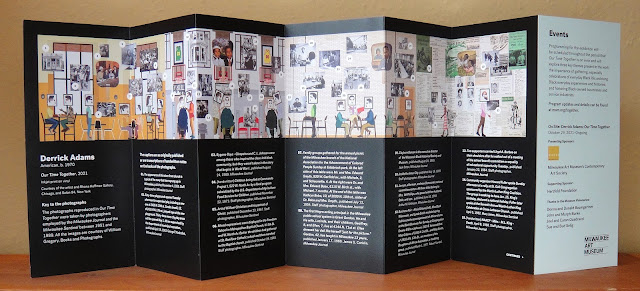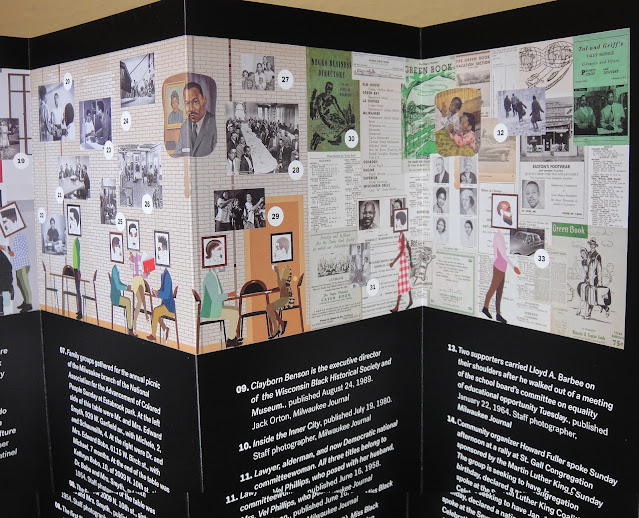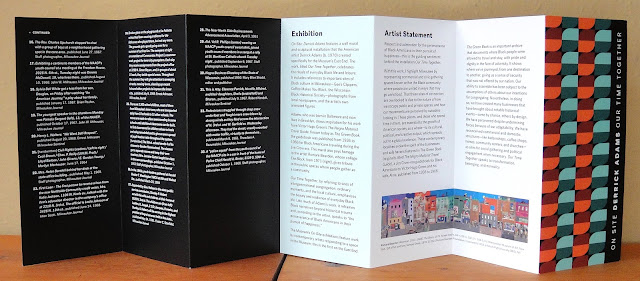This accordion is the catalogue for a site specific mural created for the Milwaukee Art Museum. The work celebrates the rituals of Black life and leisure, and includes important sites of Black culture in Milwaukee, and combined with Adams' figures are photographs from The Milwaukee Journal illustrating these sites and the people associated with them. This catalogue has numbers inserted throughout that refer to a list of descriptions of handwritten notes that have been transcribed from the backs of the original photographs. This mural also pays homage to Romare Bearden's collage "The Block" (1971) which also celebrates public spaces where people gather.
Adams, a Brooklyn-based artist, writes the following in his statement about this work:
"Respect and admiration for the perseverance of Black Americans in their pursuit of happiness—this is the guiding sentiment behind the installation "Our Time Together."
With this work, I highlight Milwaukee by representing commercial and civic gathering spaces know within the Black community, where people are united in ways that may go unnoticed. That these sites of connection are overlooked is due to the nature of how we occupy public and private spaces, and how our movements are perceived by outsiders looking in. These places, and those who spend time in them, are essential to the growth of American society as a whole—to its cultural, political, and creative output, which spreads out to a global audience. These contemporary localities evoke the spirit of the businesses and safe havens featured in "The Green Book" (originally titled "The Negro Motorist Travel Guide"), a Jim Crow-era guidebook for Black Americans by Victor Hugo Green and his wife, Alma, published from 1936-1966.
"The Green Book" is an important archive that documents where Black people were allowed to travel and stay, with pride and dignity in the face of adversity, from one destination to another, giving us a sense of security that was not offered by our nation. Our ability to assemble has been subject to the assumptions of others about our intentions that have brought notable historical events—some by chance, others by design. We have persevered despite undermining forces because of our adaptability. We have reconceived commercial and domestic structures—like barbershops, coffee shops, homes, community centers, and churches—as sites for social gathering and political engagement when necessary. "Our Time Together" speaks to transformation, belonging, and normalcy."
Thanks to Lewis Koch for bringing this accordion to my attention!
7 pages double-sided, individual pages 9" x 4", and when fully open 2ft 4".
Reverse side
Romare Bearden (1911-1988) "The Block," mixed media, 1971
Back cover








No comments:
Post a Comment